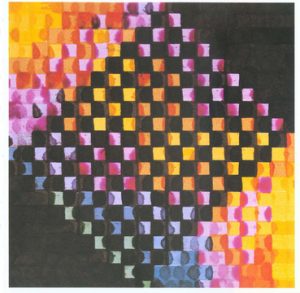I watched the video of Frieder Nake, a German mathematician, computer scientist, and pioneer of computer art. He is internationally famous for his contributions to the earliest manifestations of algorithmic and generative art. In 1963, he began his first artistic experiments with the drawing machine of Konrad Zuse, at the Technical University of Stuttgart where he studied mathematics. The reason why I thought his lecture was interesting and worth watching was first of all, he set a significant cornerstone for computer art, trying out new things in the field yet unexplored. What he has done was so innovative and creative for the time period, and what we are doing in this class right now might not be the same if he hadn’t try out new things himself.He talks through his encounter with early generative art, what he had to go through as a pioneer of the field. Through presenting some anecdotes from of his life, he tries to demonstrate how algorithmic art requires algorithmic thinking, and how computer graphics is the origin of digital media. His lecture help us understand more in depth about the thought process of the people who initiated these practices, in a different language other than actual code. Listening to the talk by somebody who made his way through an unpaved path helped me make more sense of algorithms used in generative art.
What I really liked about his art, I think, came mostly from its originality. Of course, art is original in nature, but for his work, he did not have anything to make reference from. His works are truly experimental from all aspects. I attached one of his works that I liked below. Not only that I enjoy the visual composition or the color of the piece, but because I learned from the video about how he appreciates the whole process of generative art and algorithm, it gives the piece more meaning and life.
- I wasn’t able to find his website anywhere online.

Eyeo 2014 – Frieder Nake from Eyeo Festival // INSTINT on Vimeo.
![[OLD FALL 2017] 15-104 • Introduction to Computing for Creative Practice](wp-content/uploads/2020/08/stop-banner.png)